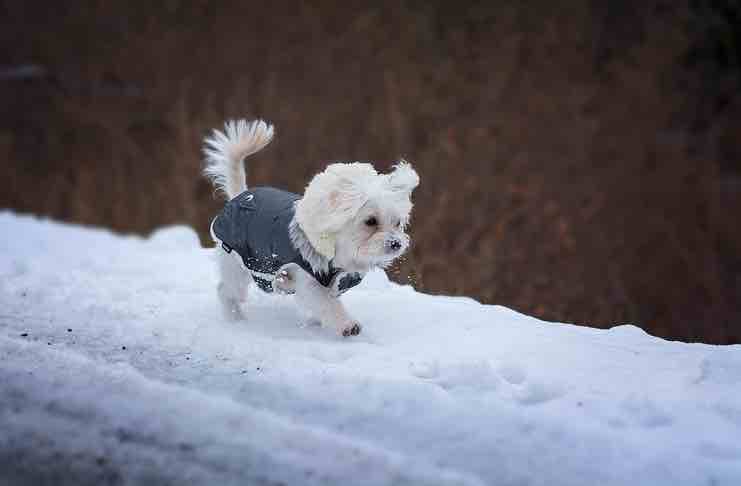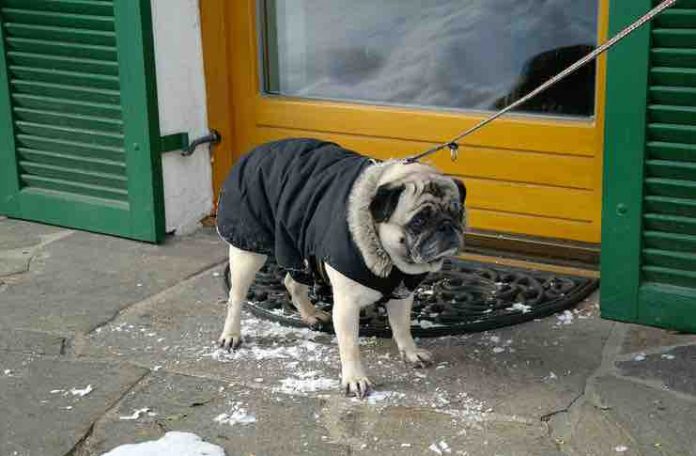The cold wintry weather can be challenging for ourselves and our furry friends that rely on us to keep them safe and warm. If your pet spends time outdoors, knowing how to keep them warm and comfortable is even more critical. In this post, we’ll discuss a few key winter pet safety tips that you should know.
Many people believe that pets tolerate the cold better than we do since they have fur, but that is simply untrue.
Here are some ideas for the best ways to look after your pet in the wintertime.
6 Winter Pet Safety Tips You Should Know:
1. Consider a checkup
As pets need yearly checkups anyway, it makes sense to do this before the cold weather sets in. Some medical conditions can worsen with cold weather, such as arthritis. If your pet has mobility issues, help him or her out by making it easier to climb onto their favorite places with a dog ramp for bed or sofa.
2. For pets that spend a lot of time outdoors
Bring your pets inside during the cold weather if you can. And if you can’t, move them to sheltered areas and make sure they have drinking water that isn’t frozen solid.
Their sheltered space needs to be large enough for them to lie down and sit while holding in their body heat. Make sure the space is free from drafts, turn it away from the wind, and cover the doorway with a heavy plastic that won’t retain water but will keep the worst of the weather out.
Raise the floor and cover it with something warm like straw or shavings of cedar, and make sure it is raised at least a few inches from the ground.
Also, make sure their food isn’t blocked by snow or ice.
3. Be wary of poisonous substances
Rock salt, which is often used to prevent slips on icy sidewalks and roads, is toxic for pets. Dogs and cats will lick the bottoms of their paws and can poison themselves with the salt that sticks to their pads. If you believe your pet has eaten rock salt, wipe his or her paws right away before he or she has a chance to lick them.
Keep antifreeze away from pets (and children), preferably in a locked cupboard. Antifreeze has a sweet taste that children and pets find attractive, but it is highly poisonous. Or choose a propylene glycol-based antifreeze that is non-toxic to pets and wildlife. It is slightly more expensive, but cheaper than an emergency trip to the vet!
4. Be mindful of your pet’s tolerance to cold
Some pets can tolerate cold better than others (just like people). Whether or not your pet can handle freezing weather depends on their breed, coat, overall health, body fat stores, and activity level.
Usually, in cold weather, you’ll need to make walks shorter to protect you both. If your pet is arthritic or elderly, they are at a greater risk of slipping on ice or snow or may just be more likely to fall or trip.
Pets with shorter legs usually don’t tolerate the cold so well since their bellies are closer to the snowy ground.
Short-haired pets have less protection and can feel the cold faster, as well as pets with health conditions that affect their ability to regulate their body temperature effectively. Conditions such as diabetes, hormonal imbalances, or heart or kidney disease affect your pet’s ability to keep warm in the cold or cool in the heat.
Pets that are very young or very old will also find it harder to regulate their body temperature, particularly in extreme temperatures.
Generally speaking, it is best to keep pets indoors in cold weather and never leave a pet unattended or for long periods in freezing weather.
Consult your vet to get a better idea of your pet’s tolerance levels so that you can both be comfortable outdoors.
5. Consider pet coats
You may want to get a dog coat or a sweater for those walks outside. Be sure to get more than one, as wet clothing can make your pet feel colder (just like us). If you want to get booties for your pet’s feet, make sure they are the right fit.

6. Know how to recognize problems
If your pet starts looking for warm places to get into, is whining, has slowed down or has stopped moving, seems weak, or is shivering, bring them inside fast as this could be hypothermia. Pets can also get frostbite, and symptoms don’t often appear until days after the damage has already been done.
Immediately contact your vet if you believe your pet has suffered from overexposure to the cold.
Want to read more of our pet-related posts? Check out our post about the signs when you need to take your pet to the vet, or our post about how to take care of exotic pets.



